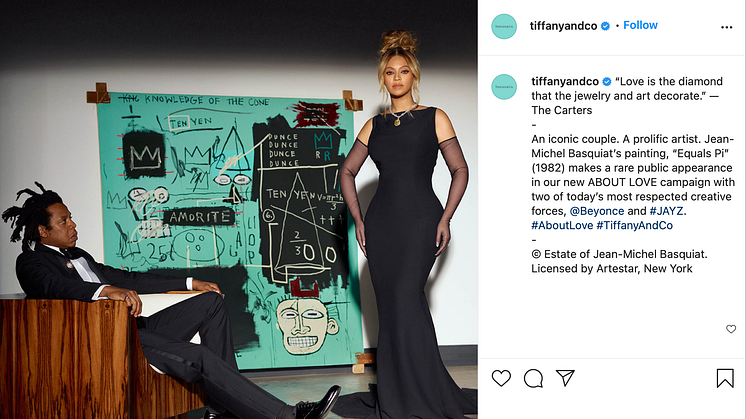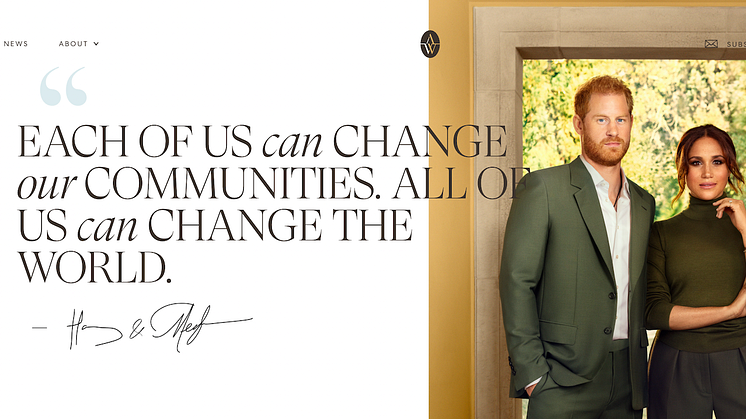
News -
The savvy use of IP in Tiffany’s new ad campaign
American jewellery brand Tiffany & Co, founded in 1837 and recently acquired by luxury conglomerate LVMH, is hoping to connect with young consumers with its next marketing push. Teasers for its upcoming advertising campaign feature three heavy-hitters — power couple Beyoncé and Jay-Z, and a painting by the late Jean-Michel Basquiat.
While Beyoncé and Jay-Z are two of pop culture’s most iconic performers, Basquiat’s painting actually presents the more intriguing use of intellectual property. Titled Equals Pi and created in 1982, it was previously in a private collection before being acquired by Tiffany, and its appearance in the teaser marks its first public appearance. The painting will soon be permanently displayed in Tiffany’s flagship boutique in New York City.
What’s so special about Equals Pi? Well, those in the know can see straightaway that the painting’s striking use of a colour now often called Tiffany blue presents a powerful branding opportunity for the jeweller.
Alexandre Arnault, Tiffany’s executive vice president of products and communications (and the son of LVMH chairman and CEO Bernard Arnault), told the press that while there is no evidence that Basquiat was directly inspired by Tiffany, “we know he loved New York, and that he loved luxury and he loved jewellery. My guess is that the [blue painting] is not by chance. The colour is so specific that it has to be some kind of homage”. The prominence of this artwork in the campaign and ultimately in the brand’s flagship boutique, he added, is a way to modernise Tiffany blue.
The IP of colours
Back in the 19th century, this robin's egg blue was the colour of the turquoise accessories Victorian brides gifted their attendants, which may have influenced the brand’s decision to pick the colour for their packaging.
Since 1998, Tiffany Blue® has been registered as a colour trademark by Tiffany. That means the brand owns this colour for its boxes and bags, and other jewellers are not allowed to use it. This is in line with the US Supreme Court ruling that a single colour can be a brand if the public strongly associates the colour with a specific product.
The colour trademark does not mean, however, that the brand owns the hue outside the context of its business. That means you can use this shade of blue to paint your home, or in an artwork, as Basquiat did.
How IP unlocks revenue streams for artists
While tapping on Basquiat’s use of a colour strongly associated with Tiffany is a savvy decision on the part of Tiffany, the Basquiat estate is making some strong moves with this collaboration as well.
Observers may have noticed that the first Instagram post from Tiffany announcing the ad campaign included this information: “© Estate of Jean-Michel Basquiat. Licensed by Artestar, New York”.
Artestar is a U.S.-based global licensing agency which represents artists and facilitates their collaboration with commercial brands. While such collaborations may have been called “selling out” in an earlier era, artists and artist estates these days are apparently eager to work with agencies like Artestar “to garner hype through partnerships with other major pop culture players, such as luxury labels”, reports Jing Culture & Commerce.
Just as luxury brands gain cultural capital from art, artists gain cultural currency (and actual currency) from visibility in the commercial space. Ultimately, it’s all about how the savvy use of IP can help brands and artists alike stay relevant to a new generation.

